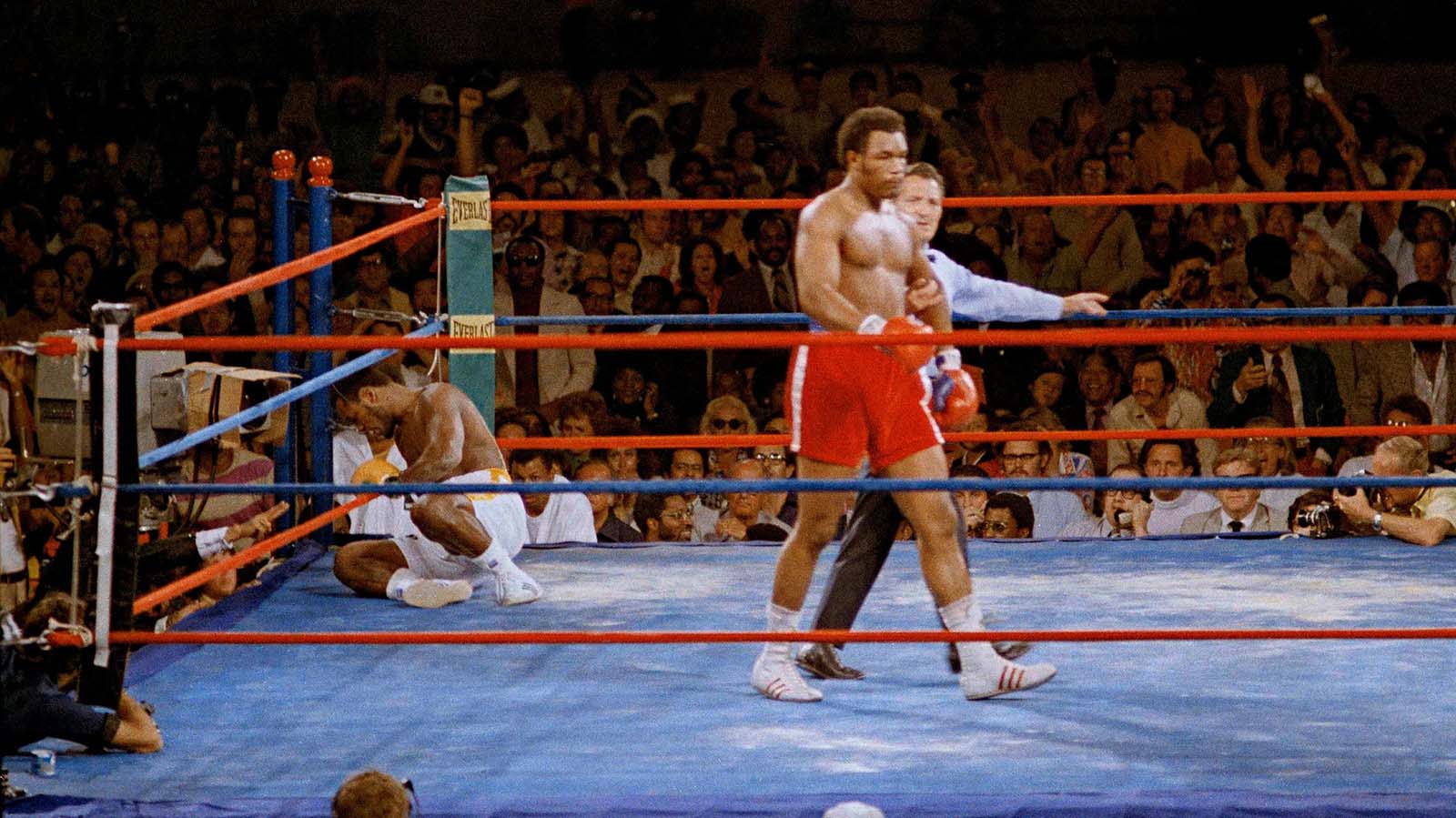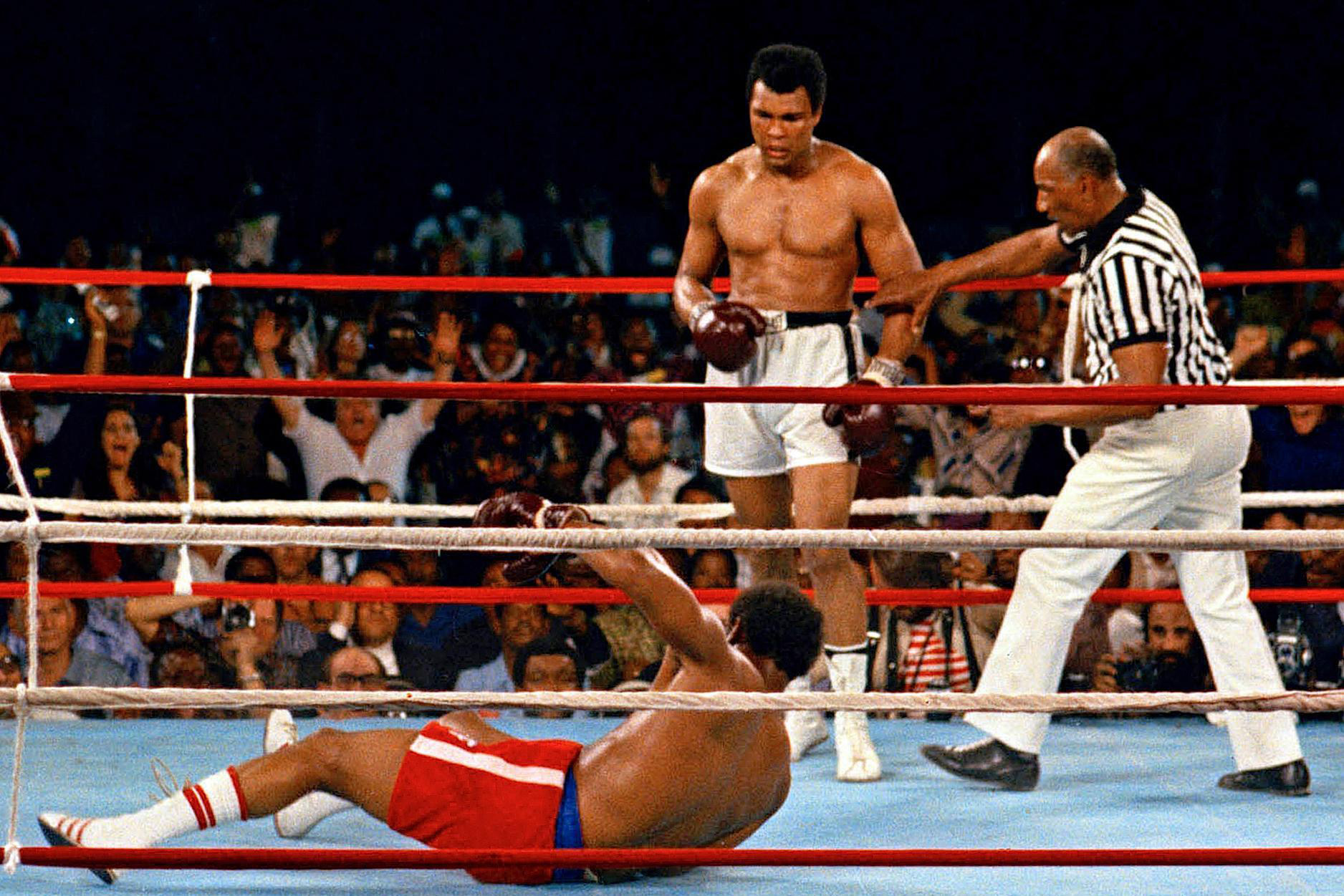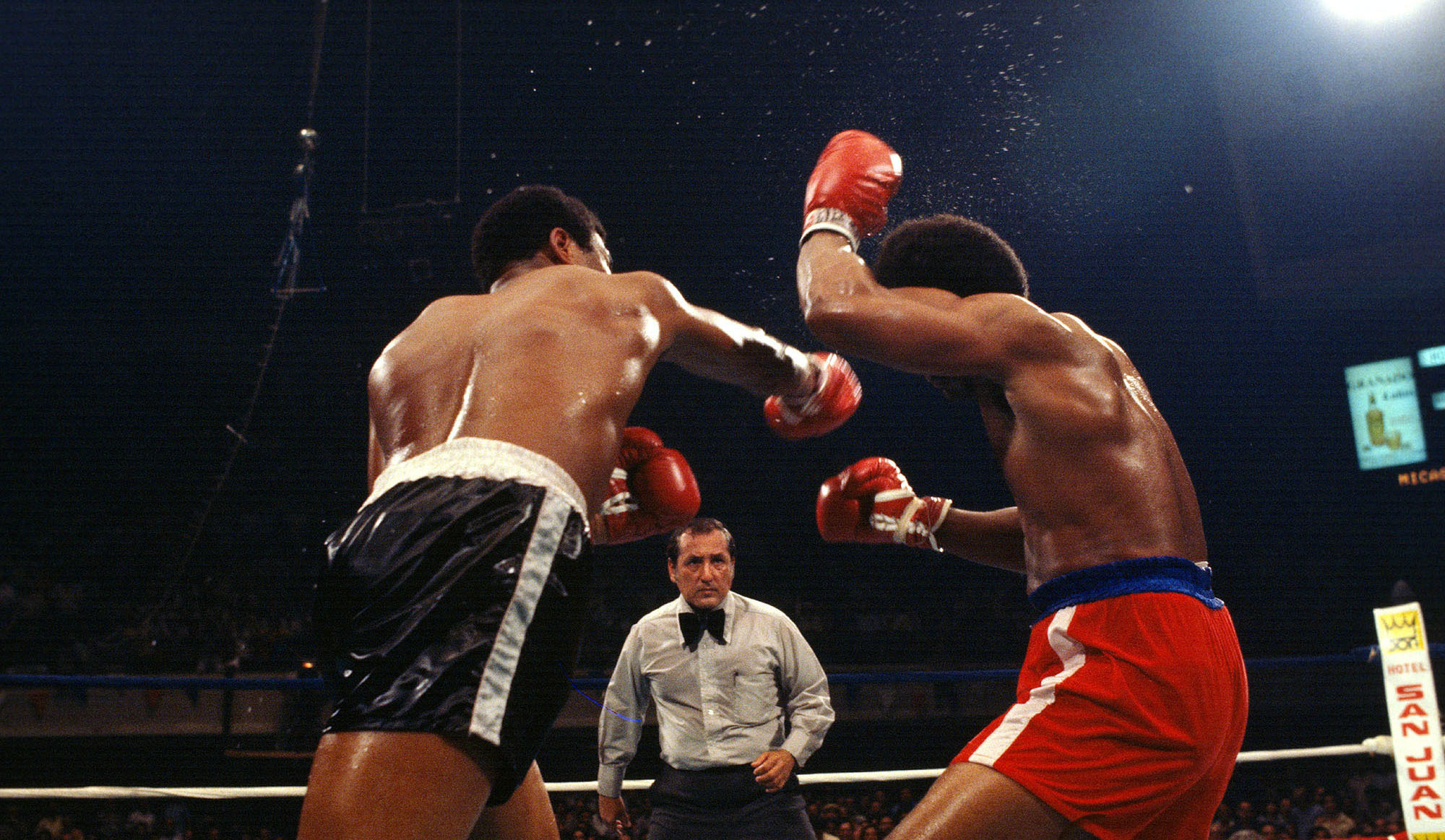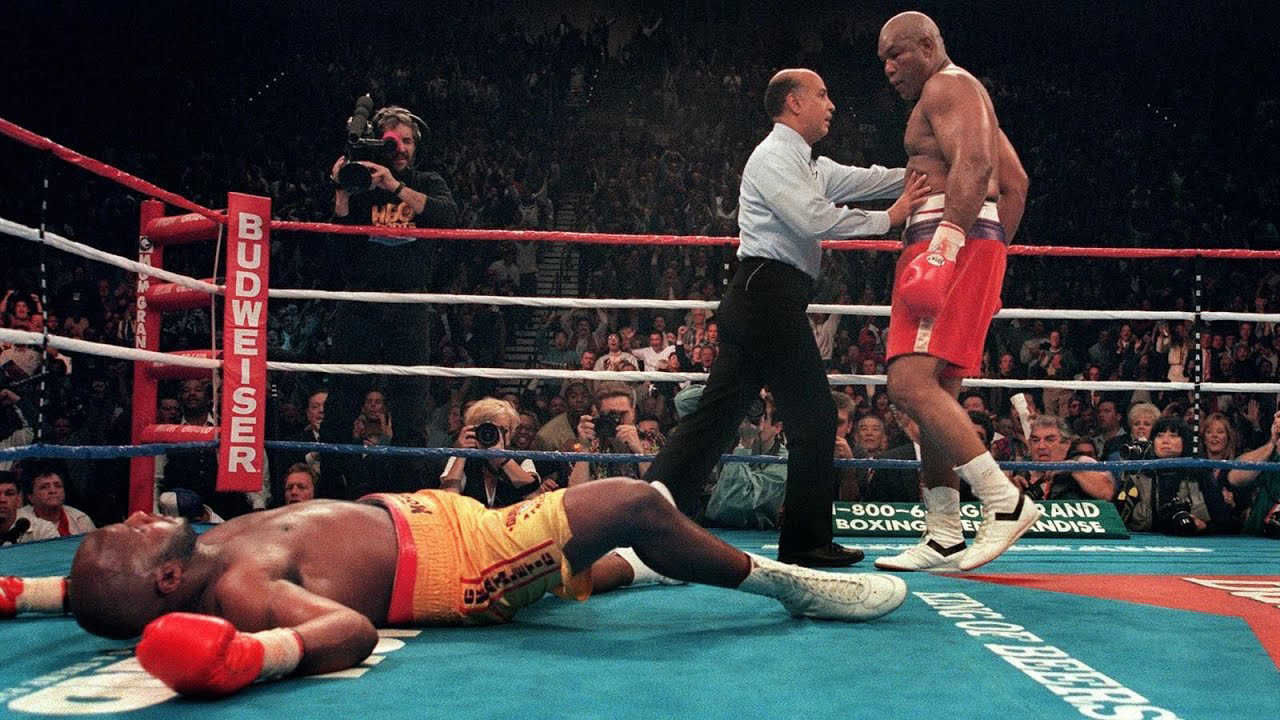George Foreman: The True Superhero of Punching, Preaching and Grilling
The story of George Foreman’s career would be rejected by any superhero movie script editor for being too contrived. From his humble roots leading to a life of crime, to a sudden epiphany that led to superhuman feats of strength - and then a second epiphany that led to incredible feats of kindness - The George Foreman Story bears all the hallmarks of a made-for-TV movie, but that’s just the beginning. What follows is one of the greatest sporting underdog stories of all time, not to mention one of the most inspirational, especially for men of a certain age who are carrying a little extra weight!
From the ‘Bloody Fifth’ to Olympic Champion
George was born into a poor family in Houston, Texas, and grew up in the Fifth Ward, a dangerous neighborhood known as ‘The Bloody Fifth’. Foreman quickly became one of the most dangerous people in that neighborhood, dropping out of high school and turning to crime. He specialized in street mugging, until eventually he was chased under a house by police and only escaped the attention of police dogs by burying himself in the mud. This led him to realize that he needed to change his ways.

He signed up for a government initiative called the Job Corps, and aged 16 moved to California to train as a bricklayer and carpenter. This was a huge change for George who later told interviewers how “I had, for the first time in my life, three meals in one day.” He resumed his education but was still regularly getting into fights, until a friend suggested he channel that aggression into becoming a boxer. George was a natural, and quickly boxed his way into the nationals. Three years later he won gold at the 1968 Olympic Games with an emphatic display of punching power, earning himself the nickname ‘Big George’ in the process.
The rise and fall of Big George
The triumphant Foreman immediately turned pro and tore through the heavyweight division, securing a title fight against reigning world champion Joe Frazier in 1973. Frazier had recently defeated Muhammad Ali, and was feared by everybody - including George - as the best boxer on earth. Frazier was a heavy favorite for the fight but Foreman overwhelmed him from the first bell, knocking him down six times in less than two rounds before the referee finally counted Frazier out. At the age of just 24, George was crowned the new heavyweight champion of the world.

"The brand new social experience where you activate your gaming skills as you train like a spy."
- TimeOut
Take on thrilling, high-energy espionage challenges across different game zones.

Foreman’s personality changed following his ascent to the top. He became mean and surly, a change that was remarked upon by many boxing figures at the time. He later admitted that he was merely trying to emulate his idol, Sonny Liston, and was projecting an image to intimidate future opponents. This worked for a while, and he successfully defended his title twice, but then came a fateful contest in Zaire with a man who did not scare easily: Muhammad Ali.

The Rumble in the Jungle is arguably the most famous fight in history, and this time George was the favorite. Ali was widely regarded as past his prime, and his infamous technical skill was seen as no match for Foreman’s devastating punching power. The reality turned out to be very different when Ali out-thought the champion with the infamous rope-a-dope tactic, defending doggedly for seven rounds as he waited for George to punch himself out. In the eighth round, Ali turned the tables on the exhausted Foreman and reclaimed the world title that had been taken from him seven years earlier.
The first comeback
George was devastated. He demanded a rematch but Ali proved elusive, so Foreman set about earning his rematch by fighting his way through the division again. He proved his tenacity during this period, winning some extraordinary fights, but he also grew bitter and became involved in ugly public disputes with Ali on several occasions. Audiences took against him and he was frequently booed until, in 1977, his career came to what seemed to be a sorry end. He had one fighter - Jimmy Young - left to beat before securing a likely rematch with Ali, but Foreman did not prepare properly for the bout which took place in a sweltering and poorly ventilated auditorium in San José, Puerto Rico. George only flew to the city the day before the fight and the lack of acclimatization affected him severely, leading to a tired performance and a unanimous points defeat.

After the fight, he became seriously ill in his dressing room. In the 2017 biopic Foreman he describes how “I went on the trip of my life, fighting for my life in a dressing room, I was going to die. Right in my thoughts, I heard, ‘Why are you afraid to die?’ I was scared… I tried to make a deal, I said, ‘I’m still George Foreman, I can box, I can give money to charity and cancer,’ and I heard a voice within me say, ‘I don’t want your money, I want YOU!’” When George came around he realized once again that he needed to change his ways and became a devout evangelical Christian.
Preaching, not punching
George immediately quit boxing and devoted himself to his new-found religious beliefs, preaching on street corners and at his local church. His rejection of boxing was total, as he puts it: “For 10 years I didn’t even make a fist.” But all this was to change after a visit to his brother Roy’s gym: “A few of the mothers were busy signing up their boys for the program. One recognized me and thought that George Foreman, former champ, might really be able to help her son stay out of trouble; at least, that's what I saw on her face. But I wanted no part. I was a preacher now. My congregation couldn't think that I had any connection to boxing again.”
A few weeks later, Roy told George that the woman’s son had shot a storekeeper in a bungled robbery and George realized he had to act. He created a new gym in Houston called The George Foreman Youth & Community Center, but by 1987 he had run out of money to keep it afloat. He decided on a simple solution: he would become world heavyweight champion again.
Sitcom George
At this point, Foreman was 38 years of age and tipping the scales at 325 pounds, more than 100 pounds heavier than when he defeated Joe Frazier. His return to the ring was openly mocked by boxing pundits and potential opponents, but Foreman slowly fought his way back into contention with the best fighters in the division. In 1990, he got his big break, fighting the former title contender Gerry Cooney in Las Vegas. Although George had shed a lot of weight since his return to the ring, he was still visibly overweight at 250 pounds and very slow on his feet, but Foreman still had two qualities that made him a formidable opponent: dogged resilience and incredible punching power. He brushed Cooney aside with ease and went on to fight Evander Holyfield for the world championship belt the following year.

Holyfield won a close fight on points, controversially holding on to Foreman throughout the final round in order to prevent the bigger man from landing a knockout blow. Meanwhile, Foreman won the admiration of millions of fans, as much for his charming persona as his tenacious fighting. George had completely changed from the surly, mean Foreman of the ‘70s and was now a smiling and avuncular figure, beloved by everybody in boxing and beyond. His growing celebrity led to countless television appearances, a hugely popular career as a pundit on HBO’s boxing coverage, and he even starred in his own short-lived sitcom - simply called George - on ABC. There were also many advertising endorsements, not least the device that still bears his name - The George Foreman Lean Mean Fat Reducing Grilling Machine - which has since gone on to sell more than 100m units and earn George far more in royalties than he ever made as a boxer.
It happened. It happened!
Raising money for the youth center was no longer a problem, but George continued to pursue his dream of becoming world champion once again. In 1994 he would get one last shot at the title, this time against Michael Moorer, an undefeated world champion who had comfortably beaten Evander Holyfield earlier that year. Moorer saw the fight as an easy payday given that George’s celebrity meant much bigger pay-per-view revenue and nobody gave George a chance. Holyfield had struggled to land a glove on the nimble Moorer and it seemed impossible that a lumbering 45-year-old could do better. Foreman was unfazed, and shared his plan for the fight with his HBO colleagues. They listened respectfully but privately gave him no chance of succeeding.
For nine rounds Moorer danced around his immobile opponent, growing progressively more confident. The judges’ cards had Moorer winning eight of the first nine rounds and as the fight progressed he became more aggressive, trying to not just win the fight but also knock Foreman out. Meanwhile, George was biding his time, barely bothering to do more than throw an occasional jab. In the 10th round he changed gears, eventually catching Moorer with a devastating blow to the chin that knocked the former champion down. Foreman’s HBO colleague Jim Lampley was commentating on the fight, but was so certain that Moorer would win that he did not have any lines prepared for a Foreman victory. As the match referee counted Moorer out, all Lampley was able to say was: “It happened. It happened!” He wasn’t just referring to Foreman’s victory, but also to the fact that the fight had played out precisely as Foreman had planned, using tactics that were very similar to the ones Ali had used to defeat him 20 years earlier.

The True Superhero of preaching, punching, and grilling
Foreman would continue to fight, remaining undefeated for three more years before finally losing to Shannon Briggs in 1997. His final words in a boxing ring were classic George: “God bless you… and remember! The George Foreman Lean Mean Fat-Reducing Grilling Machine. No home should be without this thing. God bless you, go get one!”
Some 25 years later, the proceeds from this incredible career continue to fund the youth center that also bears Foreman’s name, and he is heavily involved in numerous charitable causes in Houston and beyond, giving back to the state that raised him and inspiring millions to follow his remarkable example.
SPYSCAPE+

Join now to get True Spies episodes early and ad-free every week, plus subscriber-only Debriefs and Q&As to bring you closer to your favorite spies and stories from the show. You’ll also get our exclusive series The Razumov Files and The Great James Bond Car Robbery!


Gadgets & Gifts
Explore a world of secrets together. Navigate through interactive exhibits and missions to discover your spy roles.
Your Spy Skills
We all have valuable spy skills - your mission is to discover yours. See if you have what it takes to be a secret agent, with our authentic spy skills evaluation* developed by a former Head of Training at British Intelligence. It's FREE so share & compare with friends now!
* Find more information about the scientific methods behind the evaluation here.


Stay Connected
Follow us for the latest
TIKTOK
INSTAGRAM
X
FACEBOOK
YOUTUBE